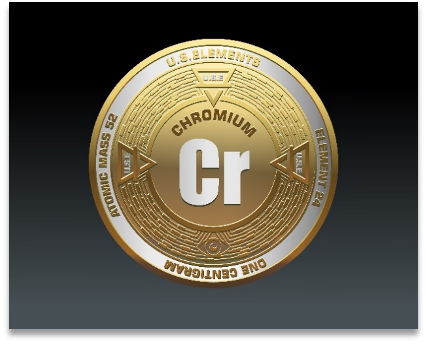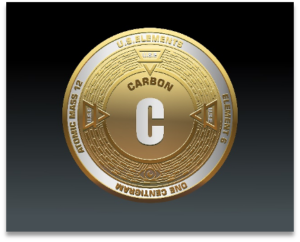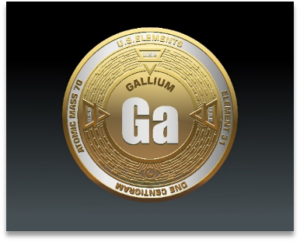Few elements are as vital to modern infrastructure and defense as chromium. As the ninth installment in our Critical Minerals Series, we turn our attention to this corrosion-resistant powerhouse—the key ingredient in stainless steel and a critical component in military applications. Without chromium, the durability of our buildings, vehicles, and military hardware would be severely compromised. Despite its importance, the U.S. is entirely dependent on foreign sources, creating a strategic vulnerability that must be addressed.
Why the U.S. Needs Chromium
Chromium is indispensable to numerous industries, particularly in the production of stainless steel, which accounts for roughly 85% of global chromium consumption. Its ability to resist rust and corrosion makes it essential for everything from kitchen appliances to surgical instruments. Beyond steel, chromium is critical in aerospace alloys, protective coatings, and even in the chemical industry, where it is used in pigments, catalysts, and leather tanning. In the defense sector, chromium strengthens armor plating, jet engines, and missile components, ensuring the resilience of military assets.
Where It’s Found Domestically
While chromium is not mined in the United States, it does exist in trace amounts in certain mineral deposits. Historically, the U.S. extracted chromium from domestic sources, but today, all chromium supply comes from imports or recycling. The Stillwater Complex in Montana contains some chromium-bearing minerals, but they are primarily extracted for platinum and palladium, making chromium recovery economically unviable at current prices.
Economic Realities
The global chromium market is largely dominated by South Africa, Kazakhstan, India, and Turkey, which collectively account for over 80% of worldwide supply. The U.S. imports nearly all its chromium from South Africa, accounting for over 35% of its supply, followed by Kazakhstan and Russia. Given the geopolitical instability of some supplier nations, chromium’s availability remains a strategic concern. Prices fluctuate based on demand for stainless steel and supply chain constraints, making it a volatile commodity.
Processing and Technological Innovations
Most chromium is extracted from chromite ore (FeCr2O4) and refined through smelting and chemical processing. Ferrochrome, an alloy of iron and chromium, is the primary feedstock for stainless steel production. While current refining processes are energy-intensive and produce waste, advancements in cleaner extraction technologies, including hydrometallurgical methods, could improve efficiency and environmental sustainability. The development of domestic recycling programs for chromium-containing materials is also a growing area of interest.
Abundance and Waste Recovery Potential
Chromium ranks as the 21st most abundant element in the Earth’s crust but is rarely found in pure form. Instead, it is primarily extracted from chromite deposits, which are concentrated in a few global locations. Recycling presents a viable alternative to reduce dependency on imports. Scrap stainless steel and spent catalysts can be processed to recover chromium, but current recycling rates do not meet demand.
Time to Market
From mining to refined ferrochrome production, the supply chain for chromium is lengthy, often taking several months to process and deliver material for industrial use. Dependence on foreign sources further complicates logistics, adding delays and costs to the supply chain.
Current and Future Applications
Chromium’s primary use in stainless steel will continue to drive demand, but emerging applications could expand its role. New high-strength alloys incorporating chromium are being developed for aerospace and defense, while chromium-based coatings are seeing increased use in advanced manufacturing due to their durability and heat resistance. Additionally, research into chromium’s catalytic properties may unlock new applications in green energy and chemical production.
Impact on Everyday Life
Every American interacts with chromium daily, whether through stainless steel appliances, transportation infrastructure, or medical devices. It ensures the longevity of bridges, vehicles, and industrial machinery, making it a fundamental element in our modern economy.
Consequences of Supply Shortages
A disruption in chromium supply would have immediate and severe consequences for the U.S. manufacturing and defense sectors. A lack of ferrochrome would drive up stainless steel prices, impacting industries from construction to healthcare. The defense sector, in particular, would face challenges in producing aircraft, armored vehicles, and naval vessels, making supply security a matter of national importance.
Import Dependence
With 100% of its chromium imported, the U.S. remains highly vulnerable to supply chain disruptions. Dependence on foreign producers, particularly from geopolitically unstable regions, creates an urgent need to diversify sources. Strengthening trade agreements, investing in strategic stockpiles, and enhancing recycling efforts are critical steps toward securing a reliable chromium supply.
Conclusion: A Call to Action
The U.S. cannot afford to remain dependent on foreign chromium sources. Domestic strategies, including increasing recycling, exploring untapped mineral deposits, and fostering alliances with reliable trade partners, must be prioritized. Ensuring a stable chromium supply is essential for our economy, infrastructure, and national defense.
Join us next week as we continue our deep dive into the critical minerals shaping America’s future.






